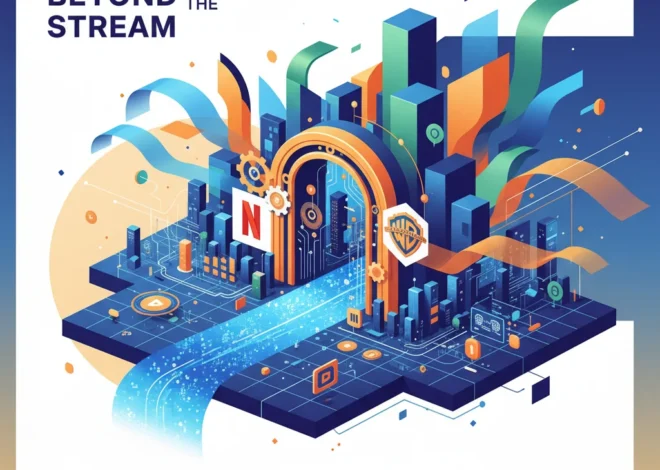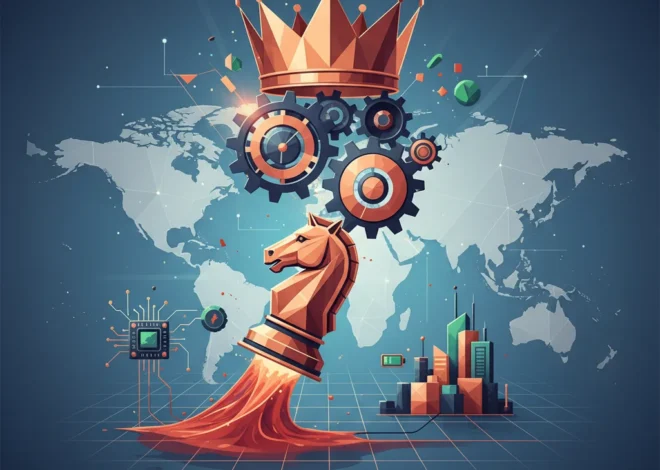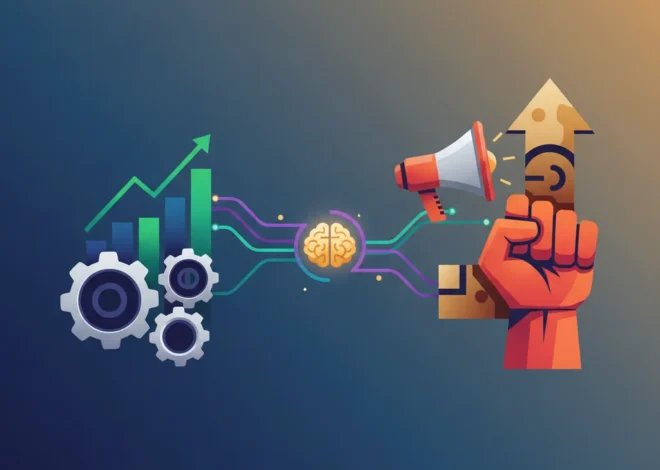
Samsung’s Roaring Comeback: How the AI Gold Rush is Forging a New Tech Titan
If you’ve been watching the tech world lately, you might feel like you’re witnessing a seismic shift. The ground is rumbling, and at the epicenter is the insatiable demand for one thing: computational power. Now, we have one of the clearest signals yet of this new reality. Samsung Electronics, the South Korean tech conglomerate, is back in a big way, and its resurgence tells a story that goes far beyond shiny new smartphones.
The company recently announced it’s on track for its highest profit in three years. According to its latest earnings guidance, operating profit is estimated to have surged by more than 30% in the latest quarter. After a period of what the Financial Times described as “tepid growth,” this isn’t just a minor uptick; it’s a cannonball splash in the global tech pond. But why does this matter to you, whether you’re a developer, a startup founder, or just a tech enthusiast? Because the “why” behind this comeback reveals everything about the future of technology, from artificial intelligence to the very architecture of the cloud.
This isn’t just a story about one company’s financial success. It’s a barometer for the entire tech ecosystem, signaling a massive, foundational shift powered by the AI revolution. Let’s break down what’s happening, why it’s happening now, and what it means for the future of innovation.
The Anatomy of a Comeback: A Tale of Two Markets
To understand Samsung’s incredible turnaround, you have to look at the two main pillars of its empire: its consumer electronics (like the Galaxy phones) and its powerhouse semiconductor division. For a long time, the smartphone market was the star of the show. But now, the script has flipped.
While the launch of the Galaxy S24, with its suite of “Galaxy AI” features, certainly helped, the real hero of this story is the humble, yet monumentally important, memory chip. The semiconductor market is notoriously cyclical, experiencing dramatic booms and busts. We’ve just emerged from a deep downturn, where an oversupply of chips and sluggish demand for electronics sent prices plummeting. Samsung, as one of the world’s largest memory chip makers, felt this pain acutely.
The following table illustrates the dramatic shift from the struggles of the previous year to the recent forecast, painting a clear picture of this recovery.
| Metric | Q1 2024 (Estimate) | Q1 2023 (Actual) | Change |
|---|---|---|---|
| Operating Profit | ~$5.0 billion | ~$477 million | ~931% Increase (YoY) |
| Revenue | ~$52.6 billion | ~$47.5 billion | ~11% Increase (YoY) |
Note: Figures are based on Samsung’s guidance and historical data, converted to USD for illustrative purposes. The year-over-year profit jump is staggering, underscoring the depth of the previous slump and the velocity of the current recovery (source).
So, what changed? In a word: AI. The explosion of generative AI models like ChatGPT and the widespread adoption of machine learning across industries have created an unprecedented, voracious appetite for high-performance memory chips. These aren’t your standard-issue RAM sticks. We’re talking about specialized hardware like High Bandwidth Memory (HBM) that is essential for training and running complex AI models. This demand has sent chip prices soaring, and Samsung is riding that wave all the way to the bank.
The AI Engine: How Hardware Fuels the Software Revolution
For those in the world of software, SaaS, and programming, it can be easy to view hardware as a given—a utility that simply exists in the background. But Samsung’s revival is a stark reminder that the hardware layer is the bedrock upon which all digital innovation is built.
Think about it: every line of code you write, every machine learning model you train, every API call to a cloud service ultimately runs on a physical server packed with processors and memory. The recent advancements in AI were not just a software breakthrough; they were made possible by parallel advancements in hardware capable of handling the immense computational load.
This symbiotic relationship works both ways:
- Hardware enables Software: The availability of more powerful and efficient chips from companies like Samsung and its competitors allows developers to build more sophisticated AI applications, process larger datasets, and push the boundaries of what’s possible in fields like automation and data science.
- Software drives Hardware Demand: The more developers and startups build AI-powered tools, the greater the demand for the underlying hardware. This creates a virtuous cycle of innovation, where software needs spur hardware development, which in turn unlocks new software capabilities.
The Ripple Effect: What This Means for Startups, Developers, and the Tech Economy
Samsung’s financial health isn’t just a topic for investors on Wall Street. It has tangible consequences for everyone in the tech industry. Here’s how this hardware boom could impact you:
For Developers and Tech Professionals:
The surge in high-performance computing capacity means you have more power at your fingertips than ever before. This opens doors for more complex programming challenges and applications. It accelerates the viability of real-time data analysis, more realistic simulations, and AI models that can understand nuance and context with greater fidelity. However, it also raises the bar. A deep understanding of how to optimize software for specific hardware architectures is becoming a critical skill in the age of specialized AI accelerators.
For Entrepreneurs and Startups:
On one hand, the hardware boom is a massive enabler. Ambitious startups looking to disrupt industries with artificial intelligence can now leverage cloud platforms that provide access to cutting-edge chips. On the other hand, this demand drives up costs. The price of GPU instances on major cloud providers is a direct reflection of the underlying hardware costs. This means SaaS startups, especially those with AI-heavy workloads, must be incredibly strategic about their infrastructure spending and pricing models to remain profitable.
For Cybersecurity and Automation:
More power isn’t just for building chatbots. It’s also critical for our digital defenses. Modern cybersecurity platforms rely on machine learning to detect threats in real-time by analyzing vast streams of data. The hardware resurgence provides the necessary muscle for these security systems to keep pace with increasingly sophisticated cyberattacks. Similarly, the world of industrial automation is being transformed by AI-powered robotics and quality control systems, all of which depend on powerful, reliable chips to function.
Beyond the Chip: Samsung’s Broader Strategy
While semiconductors are the current profit engine, Samsung isn’t a one-trick pony. The company is strategically infusing AI across its entire product ecosystem. The “Galaxy AI” features in its S24 smartphone are a prime example of bringing powerful AI capabilities directly to the edge—the device in your hand. This is a critical area of innovation, as on-device processing offers benefits in speed, privacy, and offline functionality compared to relying solely on the cloud.
This dual strategy—powering the AI data centers with its chips while also building intelligent consumer devices—positions Samsung uniquely in the market. It’s both a key arms dealer in the AI gold rush and a savvy prospector looking to build its own applications on top of the new frontier. This holistic approach is what could differentiate it from more specialized players in the long run. A 30% rise in profit is just the beginning of this new chapter.
The Final Takeaway
Samsung’s impressive financial turnaround is more than just a corporate headline. It’s a powerful indicator of a fundamental realignment in the tech world, where the demand for computational power, driven by the AI revolution, is now the primary economic engine. The silicon being forged in Samsung’s foundries is the raw material for the next generation of software, services, and digital experiences.
For anyone building a career or a business in technology, the message is clear: the relationship between hardware and software has never been more intimate or more important. Understanding this dynamic is no longer optional—it’s essential for navigating the incredible opportunities and challenges that lie ahead.


